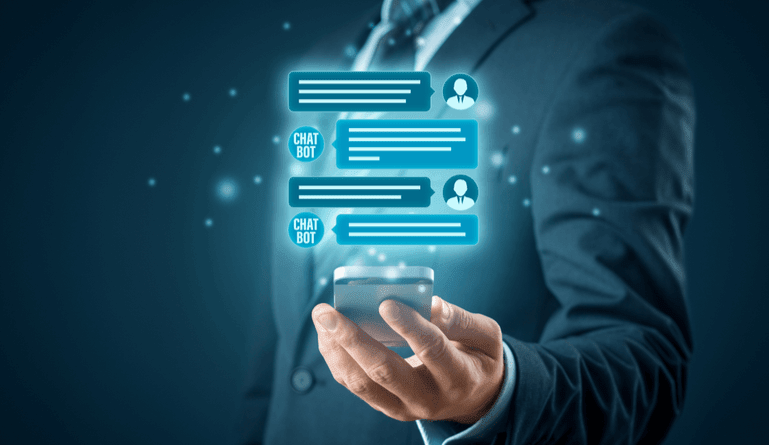A study by CareerBuilder found that 63% of American employers are looking to hire permanent, full-time employees. Moreover, Manpower reports that about 73% of employers are experiencing difficulties finding qualified employees. Many positions for skilled-workers remain vacant for extended periods.
The human resources (HR) department of companies may not get the same attention as other parts of an organization with it comes to innovative IT deployments. IT budgets are consumed by other key functions such as cybersecurity, marketing, product development, and customer service.
It is recommended that HR managers request more engagement in IT budgeting decisions to be able to have the funds needed to implement technology solutions that are cost-effective for HR processes. HR needs more involvement in the efforts made for strategic workplace transformation, such as using recruitment bots more effectively.
Chatbots for Recruitment
A recruitment chatbot is useful for HR efforts to answer FAQ questions and to advertise open positions on social media. An HR chatbot provides a communications platform for prospective employees during the application/interview period and continues seamlessly during the onboarding process. A chatbot system can be used to create a database of pre-qualified candidates and to collect valuable feedback.
Answer FAQ
The most common use of chatbots in recruitment is to provide FAQ answers for prospective employees. To be effective, the FAQ database needs to be updated frequently with information about new job postings, such as the previous experience and educational requirements for each open position.
Many companies are using hybrid human/machine learning recruitment chatbots that first attempt to provide answers to common questions using artificial intelligence programming. If the AI-driven chatbot cannot provide an adequate answer, these questions are passed on to a human for a response.
Advertise Job Openings on Social Media
Use of a recruitment chatbot, which is advertised to targeted groups on social media and accessible through messenger systems, helps increase the number of qualified candidates. Referrals and contacts can be made through social media focused on professionals such as the LinkedIn system.
Many qualified workers are already employed and not necessarily paying any attention to the job market. Recruitment chatbot can capture the attention of people who are already employed. They can get answers to preliminary questions about open positions without necessarily revealing who they are until they are ready to apply.
A nice option to offer is the ability to sign up for updates from a recruitment chatbot if a position becomes available for which they have the qualifications.
Communication Updates
CareerBuilder notes that most job seekers (81%) appreciate communication updates during the employment interview/selection process. Recruitment bots are a useful tool to keep prospective employees informed of their application’s progress.
Chatbots for recruitment can be a part of an applicant tracking system that manages the application process, communications, and any necessary interview scheduling for all applicants. Communication, using a recruitment chatbot, can be personalized with the information from the applicant’s digital record to improve the experience.
Onboarding
The average time for an applicant to complete the interview process and the evaluation for a new hire is about three weeks. During this period, the potential employee can be guided by a recruitment chatbot to learn more about the company’s culture and mission.
The recruitment chatbot can inform them of similar positions in multiple geographic areas to consider for relocation. This is also an opportunity to ask potential employees to refer others to the system that may be qualified for different open positions.
For those applicants who are hired, they can move without interruption into the onboarding process while being guided by the recruitment chatbot.
Pre-Qualified Candidates
Many companies miss the opportunity to develop an extensive database of pre-qualified candidates from the applicants. This database consists of those who have the necessary qualifications for a position but who are not selected from a group of applicants with similar qualifications. Another position may come up in the future that is suitable for a pre-qualified candidate.
In the meantime, the chatbot system can maintain personalized communication with the database of all pre-qualified candidates. Having such a database of pre-qualified candidates to consider for hire always have the potential of improving the HR processes.
Additionally, any prospective employee, who is not hired, is treated as a valuable pre-qualified candidate. They do not receive a rejection. Instead, they are encouraged to stay in touch, which improves their experience with the application process. The human staff of an HR department would be overwhelmed if attempting to maintain communication with all the pre-qualified candidates, whereas an automated chatbot system can do this at a scale of millions very easily.
Feedback
Chatbots create many opportunities to collect feedback. A chatbot has improved responses to feedback questions when compared to asking someone to fill out a survey. Using a chatbot is an interactive process that has many question/responses opportunities that go both ways. For example, a chatbot user can be asked at the end of a chat session if the conversation met their needs and if they have any suggestions for improvement.
Chatbots are being deployed by enterprises with an increasing focus on the benefits that they bring to the HR process. Improvements in natural language recognition, along with machine learning combined with sophisticated AI programming, make the chatbot experience as good, if not better, than communication with a person.
The future trend for HR managers and senior executives is that they should explore the use of chatbots in their employee recruitment efforts for the proven, cost-effective benefits.





